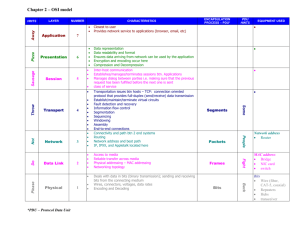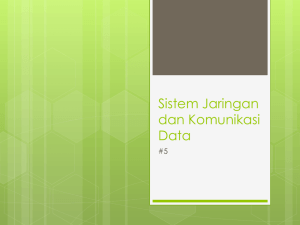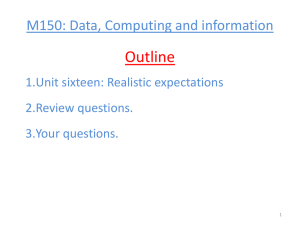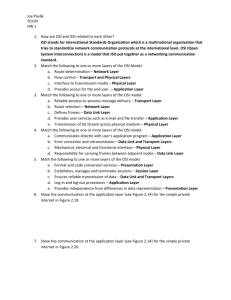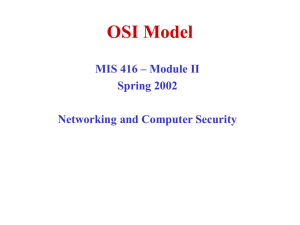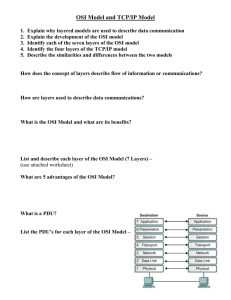Chapter 2 – OSI model
advertisement
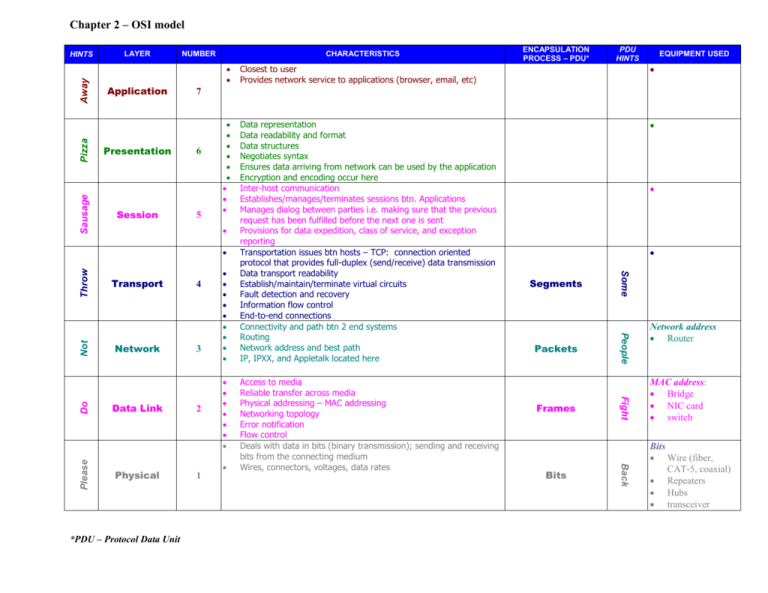
Chapter 2 – OSI model Sausage Pizza Away HINTS LAYER Application Presentation Session NUMBER CHARACTERISTICS 6 5 Not Do Please Data representation Data readability and format Data structures Negotiates syntax Ensures data arriving from network can be used by the application Encryption and encoding occur here Inter-host communication Establishes/manages/terminates sessions btn. Applications Manages dialog between parties i.e. making sure that the previous request has been fulfilled before the next one is sent Provisions for data expedition, class of service, and exception reporting Transportation issues btn hosts – TCP: connection oriented protocol that provides full-duplex (send/receive) data transmission Data transport readability Establish/maintain/terminate virtual circuits Fault detection and recovery Information flow control End-to-end connections Connectivity and path btn 2 end systems Routing Network address and best path IP, IPXX, and Appletalk located here 4 3 2 1 Access to media Reliable transfer across media Physical addressing – MAC addressing Networking topology Error notification Flow control Deals with data in bits (binary transmission); sending and receiving bits from the connecting medium Wires, connectors, voltages, data rates Segments Packets Frames Bits Back *PDU – Protocol Data Unit Fight Physical Closest to user Provides network service to applications (browser, email, etc) People Data Link EQUIPMENT USED Some Throw Network PDU HINTS 7 Transport ENCAPSULATION PROCESS – PDU* Network address Router MAC address: Bridge NIC card switch Bits Wire (fiber, CAT-5, coaxial) Repeaters Hubs transceiver Chapter 2 – OSI model OSI continued: OSI reference model is a descriptive network scheme whose standards ensure greater compatibility and interoperability between various types of network technologies Contains 7 layers: see previous page First 4 layers: Host layers; concerned with end-to-end connections Last 3 layers: Media Layers; concerned with media access Encapsulation: the process in which data is wrapped in a particular protocol header before it is sent across the network; encapsulation creates a PDU (protocol data unit) During Peer-to-Peer communications, each layer’s protocol exchanges information-called PDU’s Comparison of OSI and TCP/IP: OSI LAYER TCP/IP LAYER Application Application – Combines layers 5+ 6 + 7 Presentation Session Transport SAME Transport new name Network Internet Data Link Network Access – Combines layers 1 + 2 Physical TCP/IP Protocols used by TCP/IP: SMTP, FTP, DNS Protocol – a formal description of a set of rules and conventions that govern how devices on networks exchange information *PDU – Protocol Data Unit
